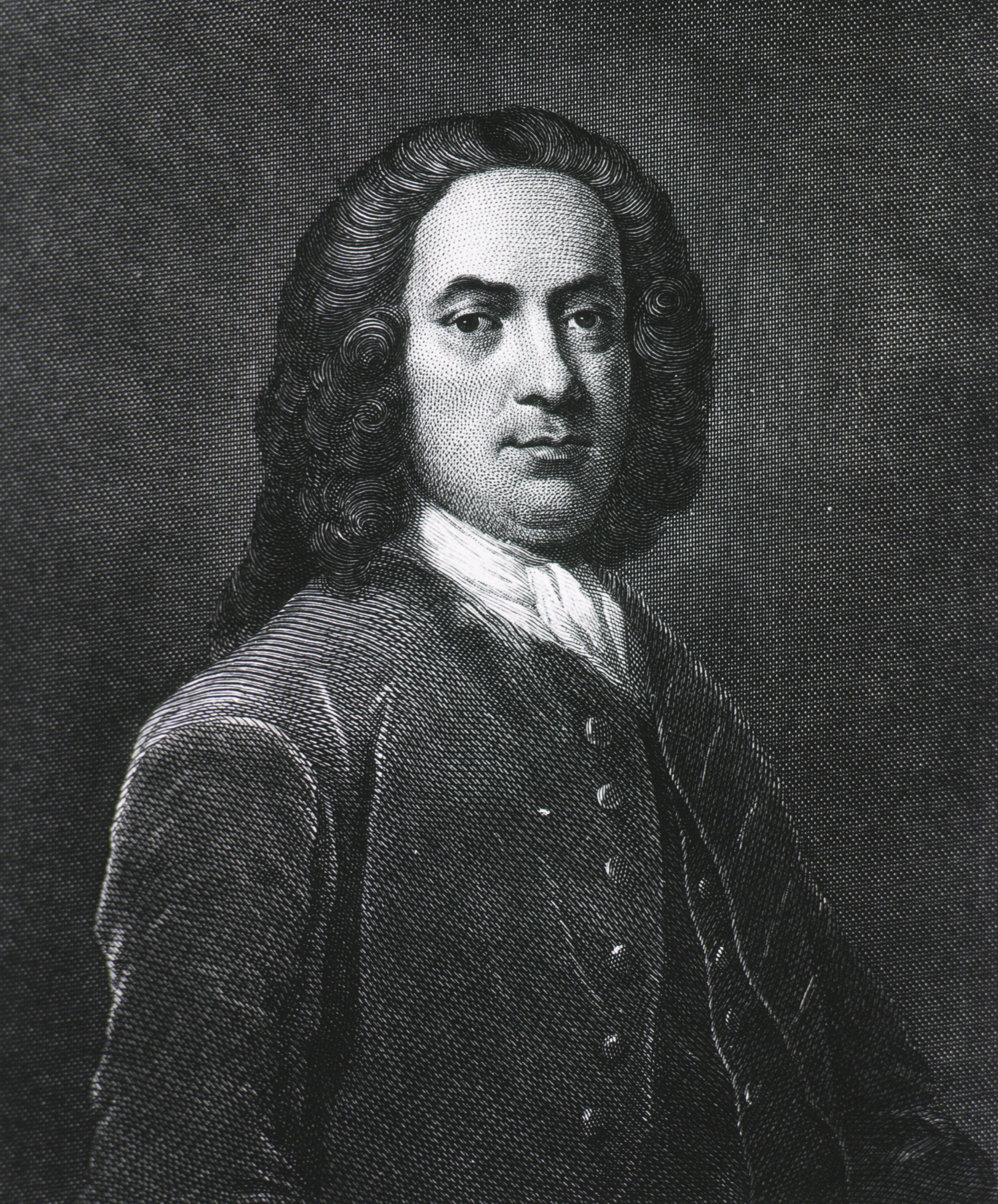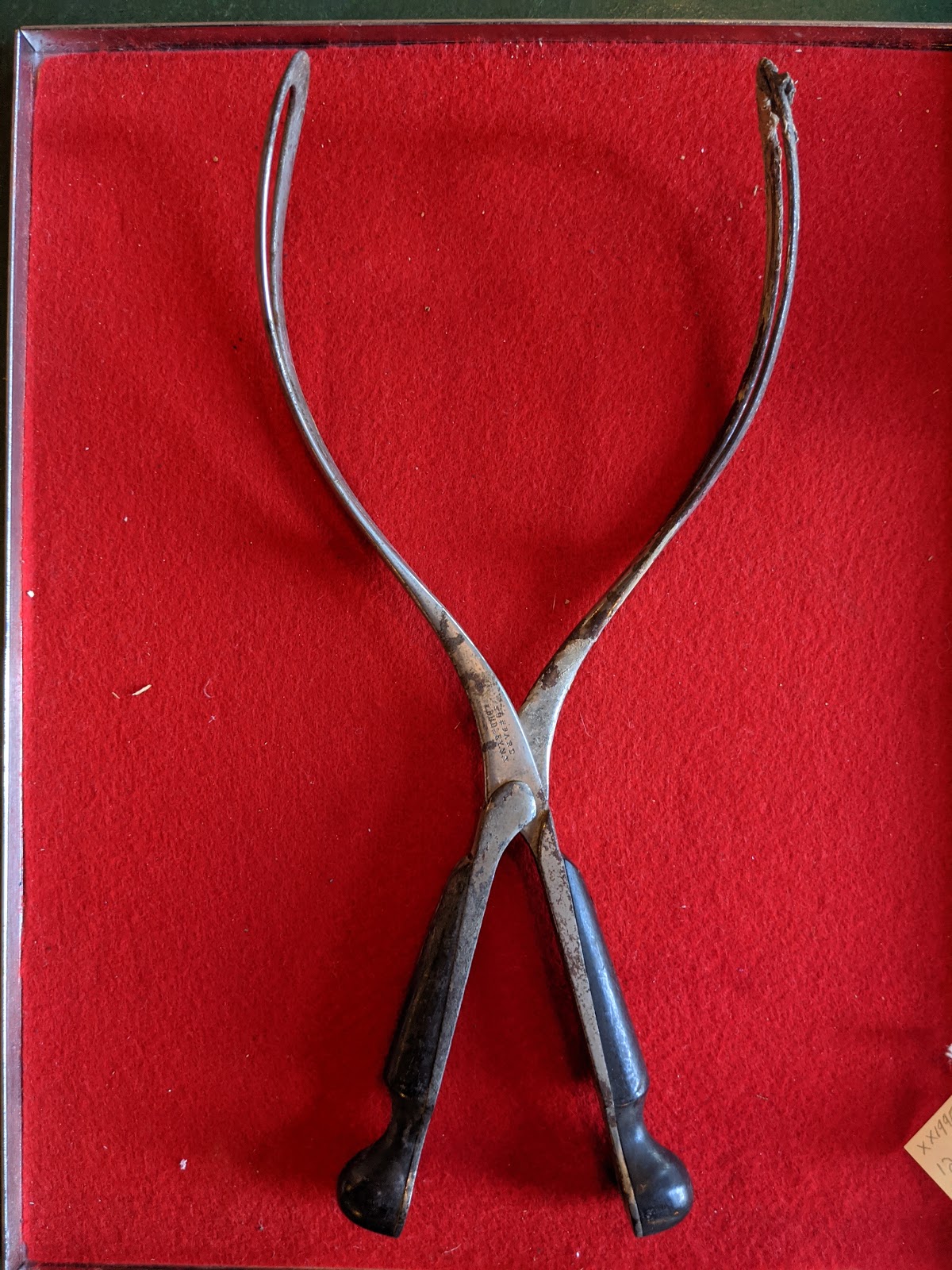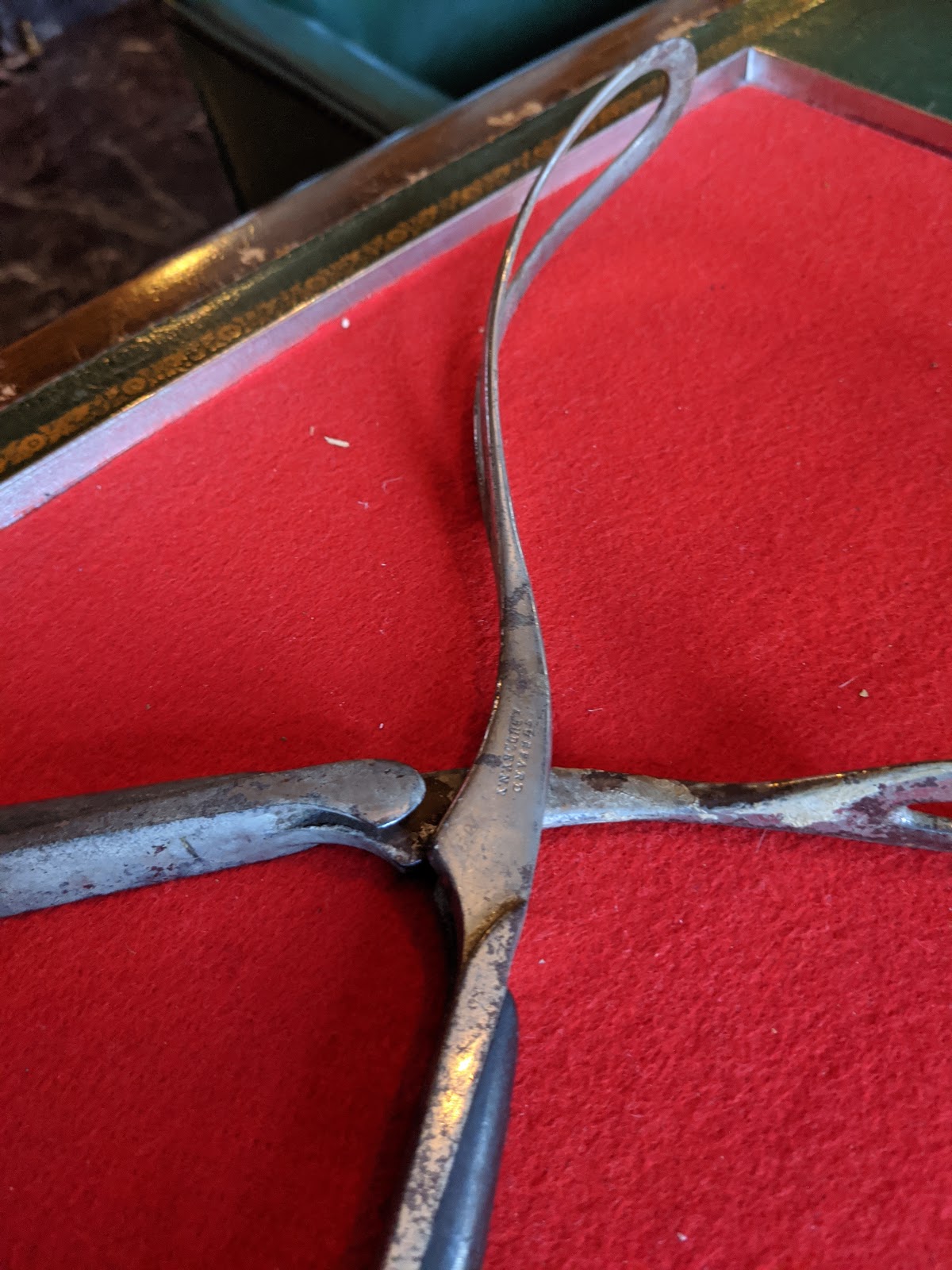Published by Erin Newton

“William Smellie,” photoprint. Accessed 1/8/2020. <http://resource.nlm.nih.gov/101429306>
William Smellie (1697-1763) is often referred to as the father of British obstetrics. He spent most of his long career overseeing and assisting in birth, reconciling the health of both mother and child in hundreds of cases. During this time, he developed a number of iterations of the forceps for which he is chiefly remembered, including a curved pelvic blade that could be maneuvered to reposition breech fetuses to their proper course. For all this, however, he was a proponent of natural childbirth, preaching non-interference in the course of nature whenever possible. [1] He was also one of the first male midwives–a distinction drawn in the dawn of scientific medicine that underlined the shift taking childbearing out of the hands of the female midwives who had performed this work for centuries and placing into the hands of men.
In Treatise on the Theory and Practice of Midwifery, Smellie attempts to pass on his vast knowledge, accrued over his career, to students entering the profession. The text owned by the Museum, which was annotated and edited posthumously by Alfred McClintock, is divided into three volumes. The first volume contains the academic knowledge necessary for dealing with both typical and difficult births. He includes in this volume details about treating common pregnancy complications, such as kidney stones through the use of venæsection, a variety of emulsions, and opiates for the pain. [2] He also describes a number of situations in which forceps are the best means with which to retrieve a fetus, including details about the positioning of the mother and the means with which to insert the blades that will cause the least amount of harm. For instance, when the child is high in the pelvis, the physician should “suppose her lying on her left side, and the forehead of the child turned to the same side of the pelvis, let the finger of the operator’s right hand be introduced along the ear, between the head and the os pubis until they pass the os internum, if the head is so immovably fixed in the pelvis that there is no passage between them […].” [3] This will allow the physician to insert the curved end of the blade in a position that would enable the fetus to be rotated slowly and safely, without damage to it or the mother.

Smellie’s obstetric forceps, featuring the interlocking design for which he is credited. Smellie obstetrical forceps, circa 1870-1894, United States of America. Metal with black wood handles, cm. 31.75. x 6.4 w. x 5.7 h. manufactured by Shepard & Dudley, NY. (International Museum of Surgical Science)

(Detail) Smellie’s obstetric forceps, featuring the interlocking design for which he is credited. Smellie obstetrical forceps, circa 1870-1894, United States of America. Metal with black wood handles, cm. 31.75. x 6.4 w. x 5.7 h. manufactured by Shepard & Dudley, NY. (International Museum of Surgical Science)
The second and third volumes contain Smellie’s “collection of cases” with detailed descriptions of some of the more troublesome births in which he intervened. Several required the use of Smellie’s long forceps which he designed himself for the purpose of easing the passage of the child’s head through the pelvis. With an assistant helping to move the woman into the supine position, he inserted the curved portion of the blade around the head of the child. “[H]aving fixed them on the head and joined the blades of the instrument together, […] my right hand pulled the head with the instrument, and delivered it safely.” [4] Smellie also often includes in these notes details about the patients he has seen, including the warning signs that indicated a troubled birth. In one case note, he is called to the bedside of a woman whose regular physician could not be reached. This case study, which results in the most tragic outcome for both mother and fetus, is still remarked in Smellie’s notes as being significant, particularly the pain and suffering of the patient who did not survive the procedure. “The woman’s pulse was so low that I could with difficulty feel its motion; a cold dampness overspread the face and extremities, and she could scarcely speak.” [5] Seeing the warning signs of a hemorrhage, he induced delivery immediately but was unable to save the child. “[I]n an hour after [the birth of the child] she began to have a difficulty of respiration, which gradually increased, with rattling in the throat; at last she fell into faintings and convulsions, which soon closed the dismal scene, by putting a period to her life.” [6] These case notes take the theories of the first part of Smellie’s text and add practice, with the totality aimed at providing a better education for midwives of the future.
While this is interesting in its own right, these volumes are distinct parts of the larger historical narrative surrounding birth and its complications during this time period, making sharp distinctions between the physical reality of medical practice and the theories of bodies, of health, and of disease. Historically, throughout the 18th and early 19th centuries in Britain, the profession of the midwife was being slowly co-opted from women by the male obstetrician, taking their name from the Latin obsterix. [7] These two fields, while closely related, operated as separate entities for years despite descriptions by men such as Smellie of their craft as midwifery. With time, men were brought in with their tools to perform births that midwives with their hands could not (or were deemed less skillfully able to handle), and the regulation of midwives caused their numbers to dwindle. Despite the practical expertise that female midwives used even in the case of difficult births, the progress of medicine was such that men armed with knowledge of anatomy and theories about the progress of difficult labor processes became the standard mode of birthing, particularly when the process was not straightforward.

An image of the fetus in utero, believed to have been drawn by Smellie himself before being rendered into print (illustrated by Petrus Camper and Jan van Rymsdyken, engraved by Charles Grignion). Smellie. William, A sett of anatomical tables, with explanations, and an abridgment, of the practice of midwifery: with a view to illustrate a treatise on that subject, and collection of cases. (London: 1754), table 8. Accessed 12/29/2019. http://resource.nlm.nih.gov/2523045R
The division of the volumes might not be so remarkable, therefore, had Smellie himself not commented on it. In his introduction to the work, he states that initially “at first, my design was to have inserted cases [into the text], by way of illustration, […] but upon further deliberation, I thought such a plan would too much embarrass the student in progress of his reading; and therefore I have, in imitation of Mauriceau, published a second volume of histories, digested into a certain number of classes or collections with proper references to the particular parts of the treatise; so that the reader, when he wants to see the illustration, may turn over to it at his leisure.” [8] This separation of the text into two distinct parts was not unusual, but it does carry with it a number of implications about the nascent field of obstetrics and the gendered division of professions in childbirth medicine.
While arguably not Smellie’s intention, this division between theory and practice has the consequence of removing descriptions of touch—of physical contact between the physician and the patient—from the text. Comparing again the two styles of writing above, it is easy to imagine the female body depicted in the first volume as lifeless, existing only under the gaze of the male physician and a passive object to his actions. This is shown not only through the descriptions of the procedures, but from Smellie’s use of the passive voice in writing them “[I]f the head will not come easily along, let the woman be turned on her back,” he writes, allowing the reader to envision the docile woman in the throes of labor pains to be quietly acquiescing to this change, repositioned at the doctor’s will. [9] By comparison, in his case notes, the women appear as patients, humans whose suffering at the pain of childbirth and its complications is real. Smellie himself touches them to check their pulse, to feel for fevers or other indications of distress. When nothing can be done, he watches them die, poetically marking the event in his notes and wondering at all moments what he could have done differently. However, removing these case studies from the corpus of literature on childbirth and consigning them to a separate volume puts a distance between the theory of midwifery and the practice of it. Even the forceps themselves, while requiring a certain amount of contact with both the female body and the fetal body, allow the physician to distance himself from contact with the patient, inserting metal where a midwife would use her hands. This is not to criticize Smellie, who by certain accounts learned as much if not more from midwives and their practices than he did his colleagues, and often criticized other physicians for failing to act to save the life of either mother or child. [10] The division between theory and practice in this case removes the need to touch female bodies—and indeed the difficult and dirty work of childbirth—from the view of the medical student for whom the book was written.
Works Cited:
- Løkke, Anne. “Mrs Stone and Dr Smellie: British eighteenth-century birth attendance and long-run levels and trends in maternal mortality discussed in a north European context.” Population Studies, Vol. 72. No. 1 (2018): p. 123-136.
- Smellie, William. A Treatise on the Theory and Practice of Midwifery. (London: New Snyderham Society, 1876-78) Vol. I, p. 154.
- Smellie, A Treatise on the Theory and Practice of Midwifery, Vol. I, p. 276.
- Smellie, A Treatise on the Theory and Practice of Midwifery, Vol. III, p. 82.
- Smellie, A Treatise on the Theory and Practice of Midwifery, Vol. III, p. 48-49.
- Smellie, A Treatise on the Theory and Practice of Midwifery, Vol. III, p. 50-51.
- Dunn, Peter M. “Dr. William Smellie (1697-1763), the master of British midwifery.” Archives of Disease in Childhood, vol 72 (1995): p. F77-F78.
- Smellie, A Treatise on the Theory and Practice of Midwifery, Vol. I p. 26.
- Smellie, A Treatise on the Theory and Practice of Midwifery, Vol. I, p. 277.
- Løkke, “Mrs Stone and Dr Smellie: British eighteenth-century birth attendance and long-run levels and trends in maternal mortality discussed in a north European context”, p. 134.
Erin M. Newton is a current Library Collections Intern at the International Museum of Surgical Science. She is a Ph.D. Candidate in History at the University of Chicago and is preparing to go to Japan to do research for her dissertation, which examines the medicalization of touch in Japanese nursing throughout the twentieth century. She is also interested in gender and narrating the histories of women in medicine.


